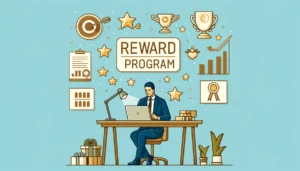HRD Roundtable Report: Boosting manager communication skills to build engaged teams
- 5 Min Read
Managers should be the glue that hold teams and organizations together. Monitoring performance, supporting through change, and acting as the front line for any concerns from their teams. However, many organizations are finding that their managers are not equipped with the tools to communicate effectively in this new digital first world. How can we better […]
- Event Types
- Date of Event: Dec 8, 2022


Managers should be the glue that hold teams and organizations together. Monitoring performance, supporting through change, and acting as the front line for any concerns from their teams. However, many organizations are finding that their managers are not equipped with the tools to communicate effectively in this new digital first world. How can we better support our managers to connect with our employees and give us that engagement edge?
Led by Stephen Vellecca, Director Learning & Development, Bloomingdales and in partnership with Workday Peakon Employee Voice, this discussion with senior HR leaders was conducted under Chatham House Rules. This report will contain the key discussion areas and all participants will be anonymised.
A note from the moderator:
As Leaders of People, communication whether informative, inspirational or feedback oriented must be current, consistent, and concise. Knowing your audience and the purpose of the communication (what do you want your team to leave with) starts with organizing your thoughts and content. The most effective leaders leverage all types of communication formats (in person, virtual, email) to drive engagement and empower their teams.
Measuring
The first challenge is understanding the level of communication in the organization – are leaders communicating effectively and how are communication styles perceived and received by employees?
The aim is for open and honest 2-way communication between the business and employees. Exit interviews are an opportunity for this, though ‘stay interviews’ may find a problem before it is too late. Surveys were the main tool however that the group discussed. One participant shared how they break down their survey information by community, so they can identify which parts of the business are reporting differently and go to the relevant managers to explore further. This is for both good and bad feedback so that they can identify what works, as much as what doesn’t. In this example they had also been tracking for 3 years and so are now able to track their progress.
In the survey itself, both indirect and direct questions can help build a picture without leading too much. E.g., do you have the information you need to do your job well, alongside how well do you get on with your manager? Limiting questions is also importance, so as not to overload the survey or cause fatigue. Are there 2 or 3 questions that will tell us what we need to know?
Leaders need to be held accountable for their scores in surveys like these. A consistent approach with set follow-up is vital for creating a positive impact. // What can be trained vs what is a personality style
Onboarding
Although there is a shift towards more continual feedback mechanisms, often surveys only happen every few months or even once a year. For someone newly joined, they need a check in sooner than at 6 months, and with current turnover trends, someone could already have left the business in that time. The group discussed a range of processes, with standard check-ins across 30, 60, 90 days. Having check-ins with team members from different parts of the business can help ensure all bases are covered, e.g., with their direct manager, but also with HR and a member of the executive team.
Onboarding templates can help standardised the process and keep people accountable. The group heard how one participant developed a 63 action point process, after laying out each step they felt was important to bringing someone into the company properly. After checking the list with managers, they then presented it to the executive team for their buy in. The exec team was thereafter responsible for holding the rest of their managers accountable.
Training
How do we better equip leaders to become inspirational, informative, and all-around great communicators? It’s one thing to have surveys, but we also must ensure leaders have the skills to change the outcomes of the surveys. The people leaders in the group were all approaching the challenge in different ways:
- Working to define more clearly what being a good communicator is – what should be shared? How should it be shared? What are the expectations the business has?
- Focussing on new managers to ensure that a standard baseline is set from the beginning of their role. Starting a managerial role can be a big step up that people are not prepared for. This could be as simple as answering should they be organising 121s? How often? What should the agenda look like?
- Opening conversations about communication styles and what employees can and should expect of each other. What is the standard for the business but also how can it be adapted to suit different people’s different needs?
- Initiatives like monthly engagement emails – what tips and tricks can leaders try this week to engage with their team members? These work as a little nudge to get leaders thinking more about their style and level of engagement and help them build good habits.
The wider business
Working in a more digital world means that the ‘water cooler’ moments that organizations rely on for informal information sharing are less frequent. How can we recreate these moments more purposefully and help people connect? Some ideas:
- Monthly ‘no work’ calls for teams to help build personal connections
- More frequent company wide communications on high level decisions to keep everyone in the loop
- Sharing how and why decisions are being made, so that every level feels involved in the process.
- Restructuring of the comms team to be more of an internal operations team – responsible for internal sharing of information as well
- Hiring additional staff to focus purely on leadership comms
- Centring career conversations as part of engagement, to better support long term retention.
- On-site/in office days with blocked out time for connecting in person and no calls.
- Continue to invest in activities like ERGs to support employees with connecting with each other
Resources mentioned:
How to Have Fewer Meetings (Twitter Thread)








